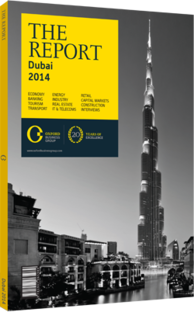Round of restructuring: Moves are under way to consolidate the sector
In September 2013, the UAE’s federal insurance regulator called for consolidation in the industry, a move that was welcomed by the growing chorus of players that have warned that the market was becoming saturated over the past five years. Although the Insurance Authority (IA) placed a moratorium on new licences for insurers and brokers in 2009 and doubled the capital requirements to establish new local firms, few believe the market can continue to support the 61 players currently licensed to operate.
Growing Risks
A.M. Best’s review of the UAE’s insurance sector noted the continued growth potential of the market and the strong financial position of the companies it rates, but also highlighted the growing risk of greater losses for insurers as competition intensifies. “Many insurers are posting excellent profits, but in the long term, the UAE may not be large enough to sustain 61 insurers, which could lead to some industry consolidation,” the report stated.
The CEOs of Dubai’s top insurance firms also tend to support consolidation, but smaller players are less united, despite being the main victims of price competition, most notably in motor and medical. “There is a need for tighter regulation in the sector, from capital requirements to risk management principles and commonly recognised accounting practices,” Patrick Choffel, CEO of Dubai-based Oman Insurance Company, told OBG. “This could trigger welcome and significant consolidation in the market.”
Numbers
One indicator that the market is overcrowded is the low ratio of net premiums to capital. A 2010 World Bank report noted that the average net premium to capital ratio in the UAE was 55%, compared to 78% for MENA and 310% in OECD countries. The bank also estimated that the average ratio of gross premiums per insurer (adjusted for per capita income) then stood at 0.2, against 0.8 and 1.6, respectively, for MENA and the OECD.
Profitability — which is measured by net profit as a percentage of gross written premiums — has also declined, falling from 34% in 2007 to 6% in 2011 in the UAE. This is in line with the broader trend in the wider GCC insurance market, which saw profitability decline from 28% to 9% during the same period of time, according to figures from Alpen Capital.
Motor insurance is a particularly cut-rate segment of the market: in 2012, the average loss ratio in the accident and liability insurance segment, which includes motor, was 56.4%, though a unified motor policy is currently being developed that would standardise pricing so that premiums can keep pace with technical costs. Additionally, the medical insurance line is also proving to be increasingly cost-prohibitive, according to IA figures, with the average medical loss ratio at more than 85%.
Regulatory Debate
While few dispute that fierce competition on pricing has taken a bite out of profits, some stakeholders are less keen on solving the problem with additional regulations. “The financial crisis has made consumers more risk averse and price sensitive and they will demand more transparent products in the future,” Julio García Villalón, MetLife’s regional head for the Middle East, told OBG. “There seems to be two possible strategies to succeed in today's local insurance environment: either companies leverage their size or become a specialist of a line of business, market segment or geography.”
Despite verbal encouragement from the IA, regulators seem reluctant to intervene substantially in the market just yet. The secretary-general of the Emirates Insurance Association, Fareed Lutfi, told local media in an interview in late October 2013 that he believes a few key government interventions will push smaller players to partner up. “Some say inflated valuations and reluctance to relinquish control are among the factors preventing smaller companies in the GCC from consolidating, despite the fact that some insurers are struggling with profitability. Once proper legal solvency requirements are put in place, critical factors will surface leading to mergers and acquisitions.”
You have reached the limit of premium articles you can view for free.
Choose from the options below to purchase print or digital editions of our Reports. You can also purchase a website subscription giving you unlimited access to all of our Reports online for 12 months.
If you have already purchased this Report or have a website subscription, please login to continue.

